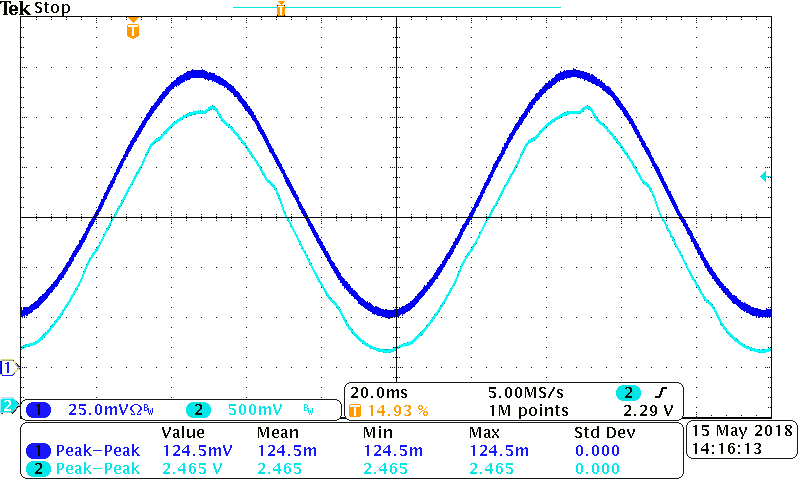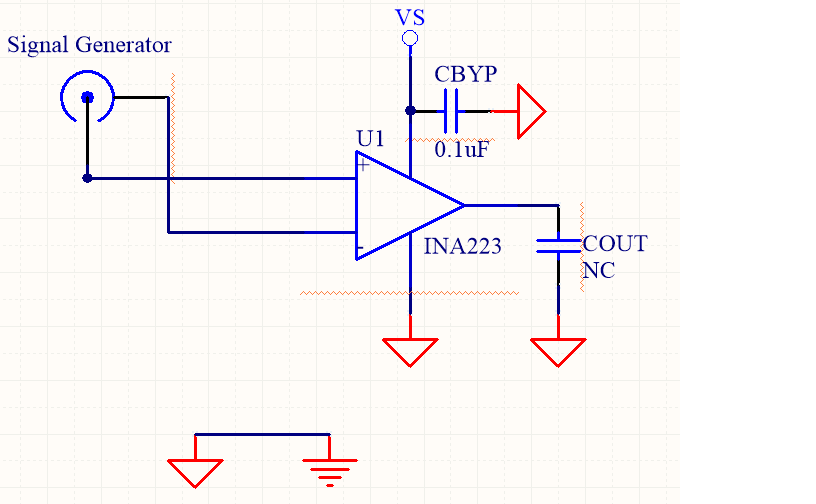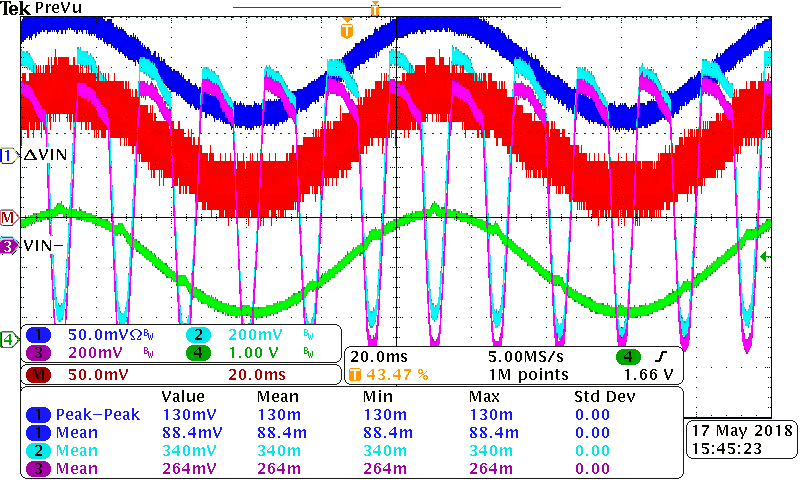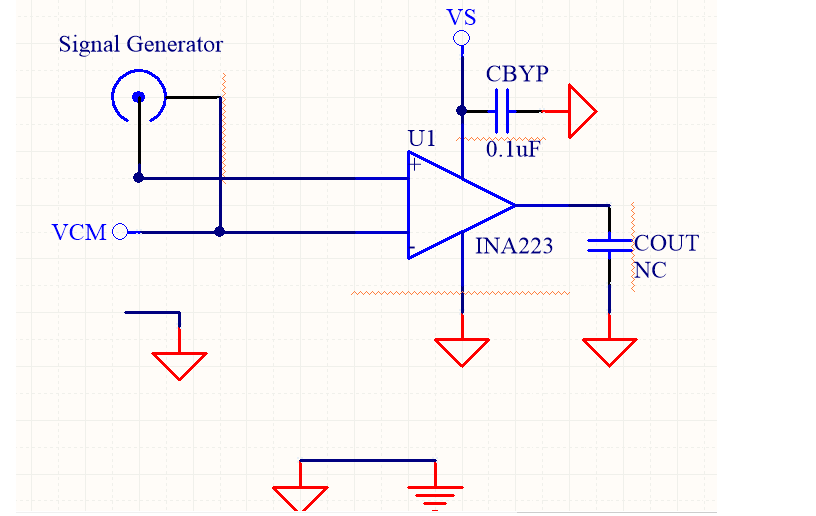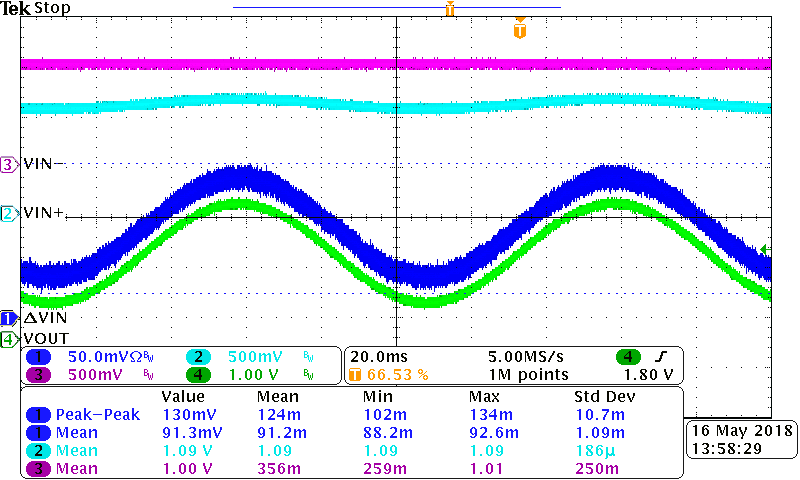I am trying to check Figure 20 (Gain VS. Frequency) in datasheet.
For simply measurement, the stimulus is from the functional generator (AFG3102) which is floating signal source; I connect the signal output across the VIN+ and VIN- directly.
But found the interference on output waveform, for removing other out of band noise, I use the “Average” function supported by oscilloscope, the interference is still observed
Should I miss something essential to carefully take into account?
Thanks
Regard
Ben



